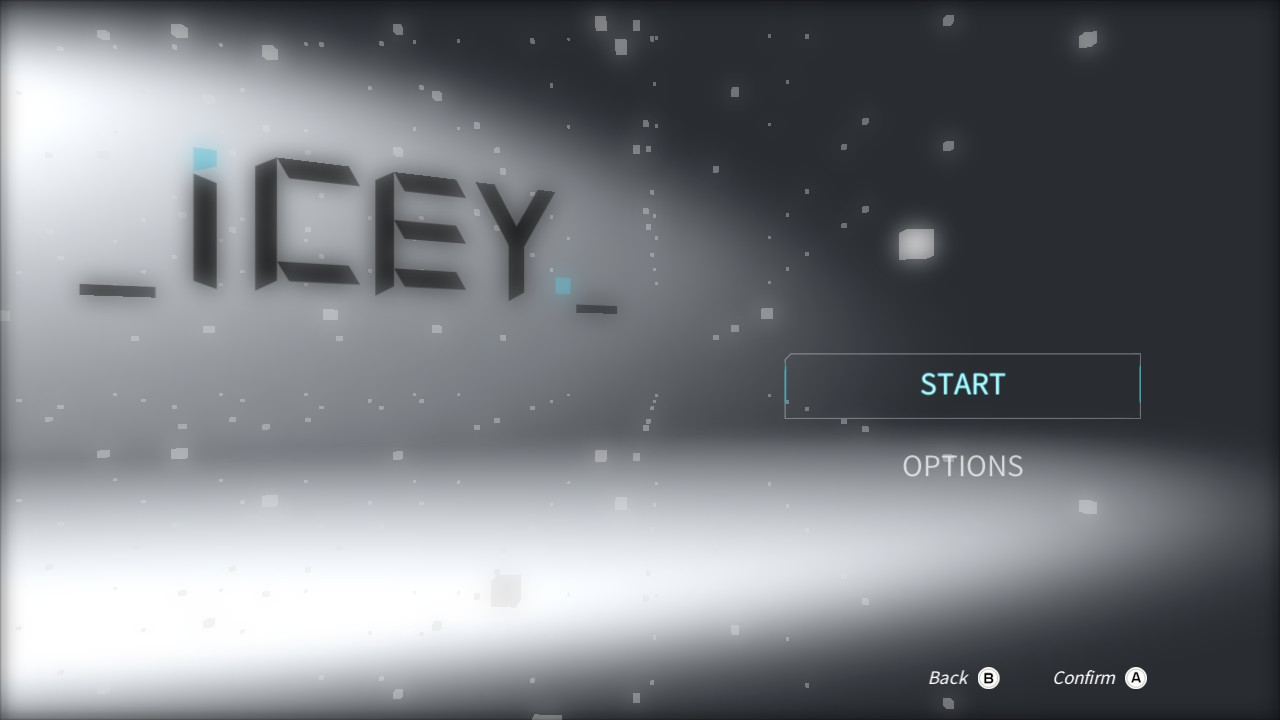[Review] ICEY – Nintendo Switch
ICEY
Nintendo Switch
Developed By: FantaBlade Network
Published By: X. D. Network
Category: Action, Adventure, Metroidvania
Release Date: 5.31.18
The 2D side scrolling Metroidvania market is pretty crowded right now. It seems like every other indie studio is putting out an ultra-polished 2D action platformer every week. FantaBlade Network takes their stab at the genre with ICEY for the Nintendo Switch by taking a different approach than most. Many studios focus on gameplay mechanics, which is one way to go, but like I said; there are so many well-designed action platformers out there that trying to complete just on gameplay is a pretty tall order. ICEY, on the other hand, starts with a polished gameplay experience and experiments instead with its narrative structure to mixed – but interesting – results.
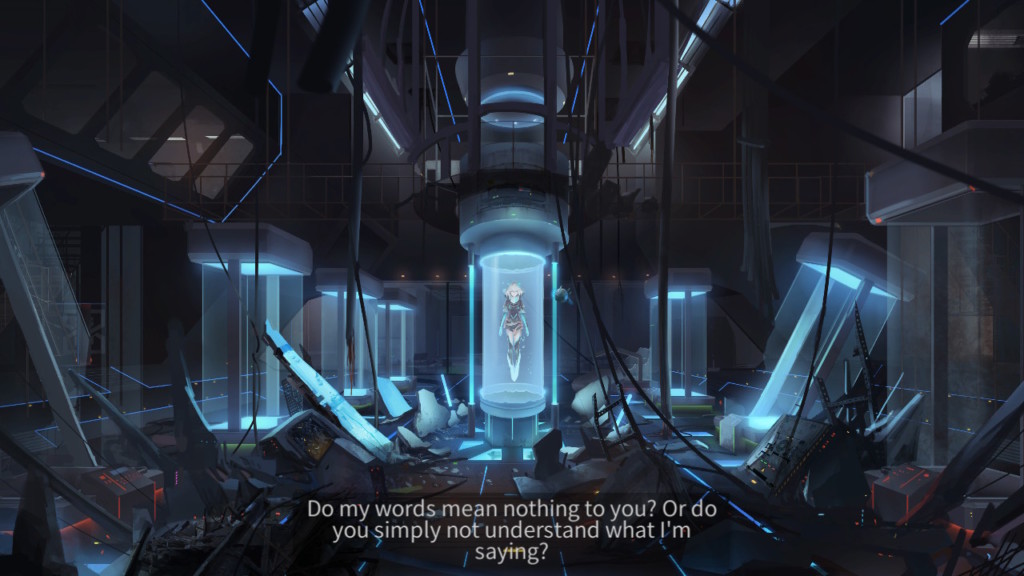
ICEY, UCEY, WEALLCEY for ICEY
Evil android JUDAS and his many very evil android followers have used the Necronomicon to upload their consciousness to a digital city known as Ultimopolis. The Chosen One, ICEY, is activated to stop him and… I’m not really sure what her motivation is beyond that. I’m not even all the way sure what they’re trying to stop. I don’t think ICEY is quite sure either. The game is super meta, and it wants you to know it from the get-go. The narrator speaks to you constantly, directing you to go in one direction, and gets exasperated when you try a different path than the one proscribed.
These diverging paths produce some interesting results; there are some rooms that just grant some extra credits for buying upgrades, and some that shed light on the backstory. Some don’t shed light on anything; they’re just an excuse for the developer to talk to the player about the process of creating a game. There are some oblique references to The King in Yellow (remember the first season of True Detective?), H.P. Lovecraft, and Ambrose Bierce’s short story An Inhabitant of Carcosa (which was hugely influential on the other two). The narrator frequently breaks the fourth wall to tell the player what to do and complains when the player finds a secret that they’re not supposed to (except that they are and that’s the whole game in the narrative).
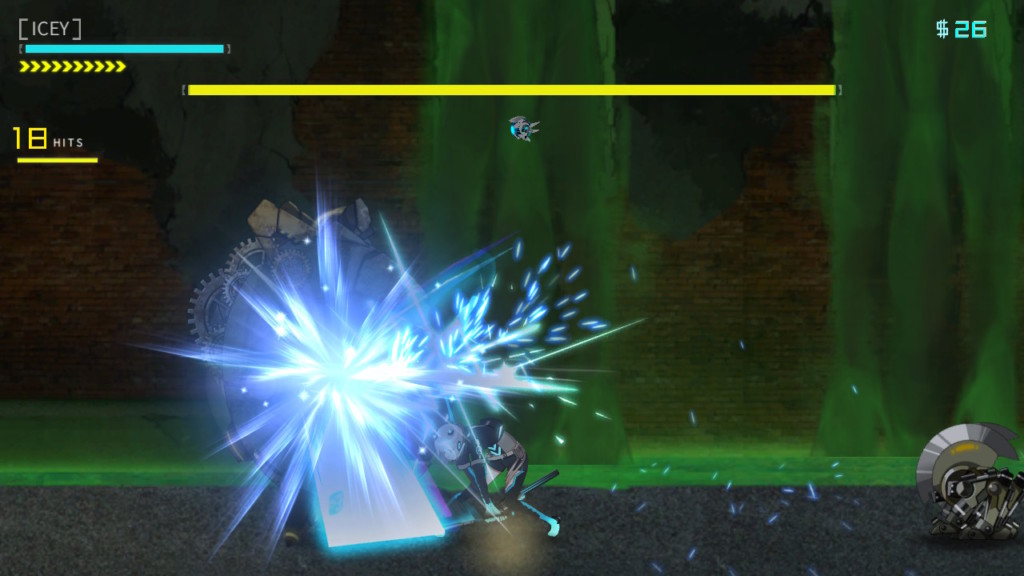
As a cohesive whole, ICEY’s narrative… isn’t really cohesive. I don’t know if it’s the translation or the narrator, but everything never quite comes together the way it seems to want to. The “stop the evil android overlord” narrative is a little tired, but it’s at least comprehensible. The remainder of the backstory is just hard to follow; the small Easter eggs liberally sprinkled throughout the game are tough to piece together, to put it mildly, especially if you lack familiarity with the classic works of horror it frequently references. That isn’t to say it isn’t interesting; most of the reason I was so frustrated by the difficulty I had making everything fit together is precisely because I found the scope and ambition of the metanarrative so fascinating. I’ll just have to hit some forums and see what the internet hive mind can come up with.
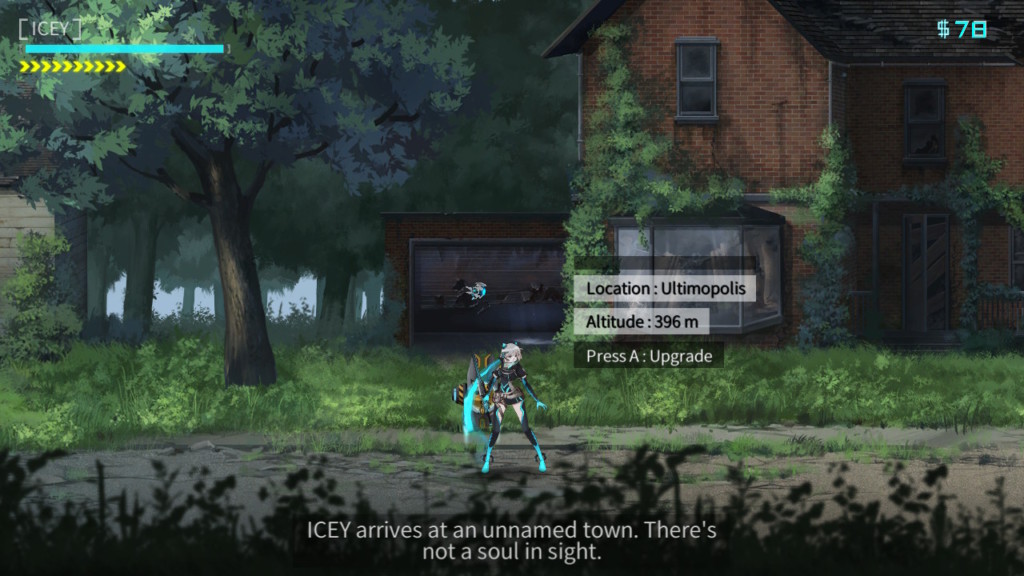
Hack, Slash, Jump, Dash
ICEY’s gameplay, on the other hand, is crystal clear. It’s a straight up 2D action platformer with Metroidvania style exploration elements. ICEY is equipped with a sword, and she can make quick, light normal attacks or slower heavy attacks. Getting an enemy’s health bar low enough staggers an enemy, which ICEY can take advantage of to do a finishing move if the player so chooses. Getting hit depletes both ICEY’s health and guard bar; when the guard bar is empty, ICEY’s combos can be interrupted if she is hit by an enemy. It was the most annoying aspect of the game, really; I would have preferred a guard button. Once the guard bar is gone, it’s frustratingly easy and common for enemies to break up your attack. It’s doubly frustrating because ICEY’s attacks don’t interrupt enemy attacks at all. You can be making your attack and at any time at all the enemy can counter it with ease.
You can jump or dodge to keep ICEY away from hits if you want, but doing so slows the pace of the game down quite a bit. Instead, it was much more effective to use the dash to get behind enemies and attack that way. Some of the harder enemies can still turn around and attack when you do this, but it extends the life of the guard bar and reduces the effect of losing your guard bar if and when that happens. The guard bar thing, curiously, is only a problem when fighting some regular enemies. The boss fights are rather well-designed, for the most part, so once you can recognize the attack patterns the guard bars are less of a factor.
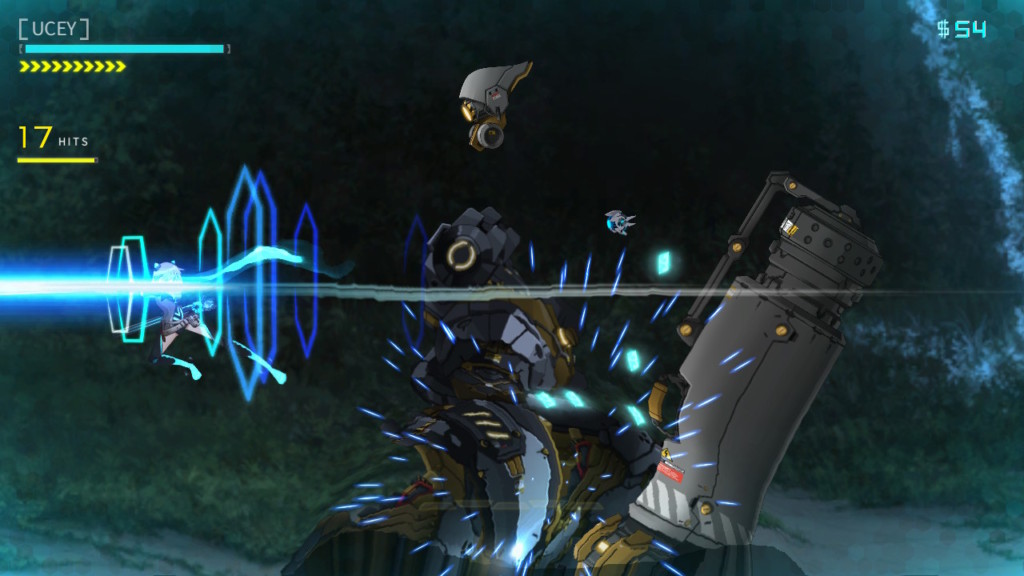
Defeating enemies replenishes a small amount of health and restores a portion of the guard bar, and if you finish with a finishing move, enemies drop crystals ICEY can absorb and release to stun her opponents for a short time. You do have to sit still for a second or two to wait for the crystals to come to you, and if you get hit in the split-second between absorbing the crystals and releasing the attack (happened more often than you’d think), the attack is cancelled and the crystals are just wasted. The stun only lasts for a few seconds, but it’s enough to get off most combos, so if you do it right you can get into a loop of finisher-stun-finisher which is hard for enemies to break. Despite the guard bar frustration, however, it’s a generally polished, engaging combat system.
Sprinkled throughout the different scenes in the game are upgrade terminals. Defeating enemies also drops some cash which you can use to upgrade ICEY at these terminals. Upgrades are fairly standard; you can upgrade and unlock combo attacks or upgrade ICEY’s health and guard bars. The upgrades make the game’s combat a lot easier, which is great, because the narrative often forces you to replay some sequences multiple times. When your damage is doubled, it goes a lot faster the second, third, or however many times you have to do it.
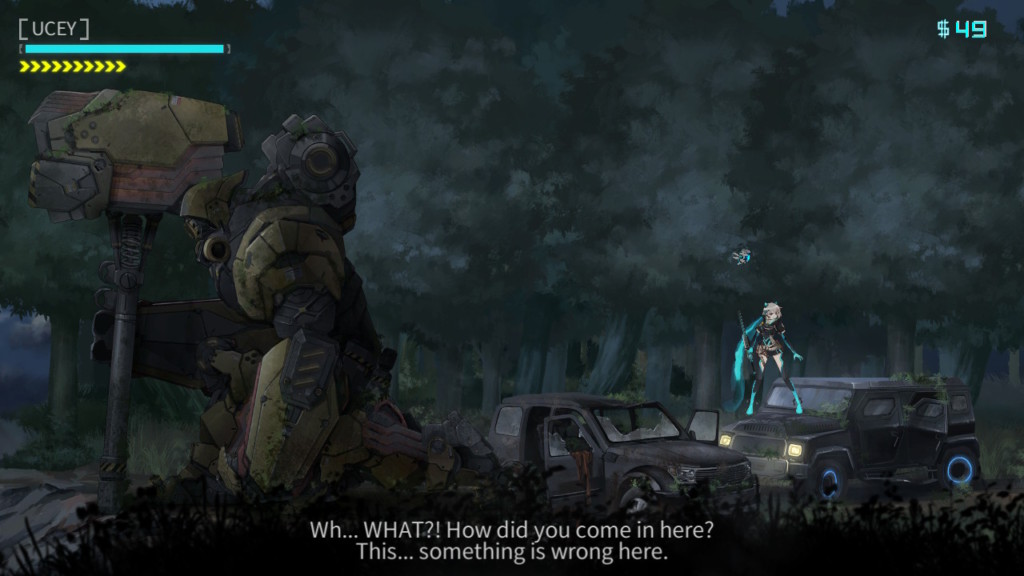
Visual Flair
ICEY is a supremely pretty game, with what look like hand-drawn character sprites and backgrounds. Everything looks sharp and clear; it generally feels like you’re playing an anime. I’m personally a fan of a brighter color palette in my anime-inspired games, and while there are a lot of browns and greys in ICEY, there is enough contrast with brighter blues and reds in ICEY’s character model and attack effects that it makes for a very attractive game overall, from an art design standpoint. The character animations are smooth and dynamic as well, so visually it’s a treat to play.
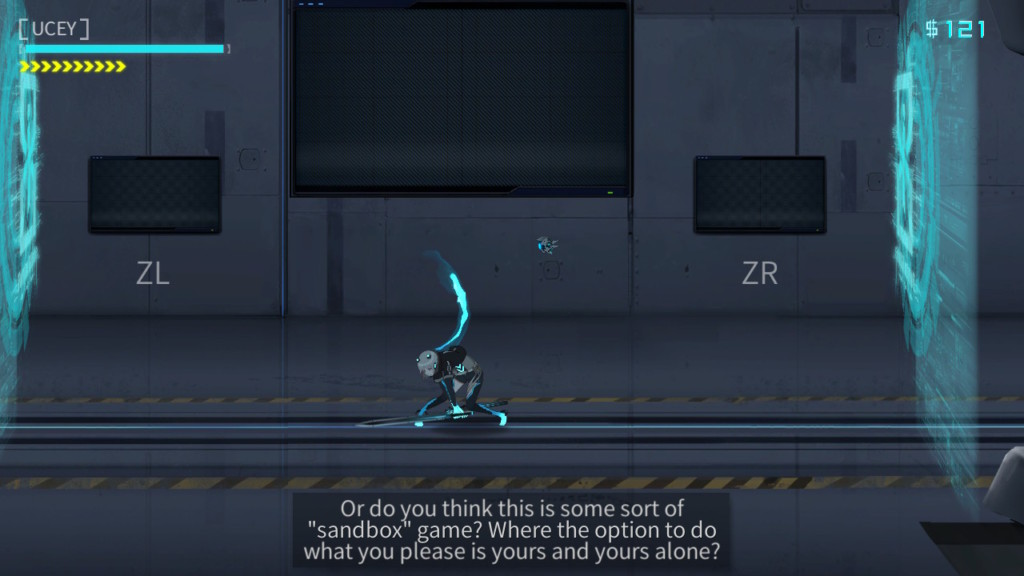
Finding Your Voice… OK Maybe Find a Different Voice
The audio track for the game is a pretty mixed bag. The music is upbeat and exciting; a nice electronic beat that accentuates the action and contributes to building the sci-fi dystopia atmosphere. There is only one role in the game that gets voice acting, however, and that’s the narrator. He’s… not good. He reads his lines with a very confusing tone that never seemed to match what I saw on the screen. I think a lot of my confusion surrounding the backstory of the game comes from the fact that I was never sure what the narration was trying to convey. There was no subtlety to the performance; everything was read in the same inscrutable, amateurish monotone. When I began playing, I wondered if the narrator was trying to hide something or just giving a poor performance. I don’t know about the former, but I’m certain of the latter. The voice work is definitely the low point of the game.
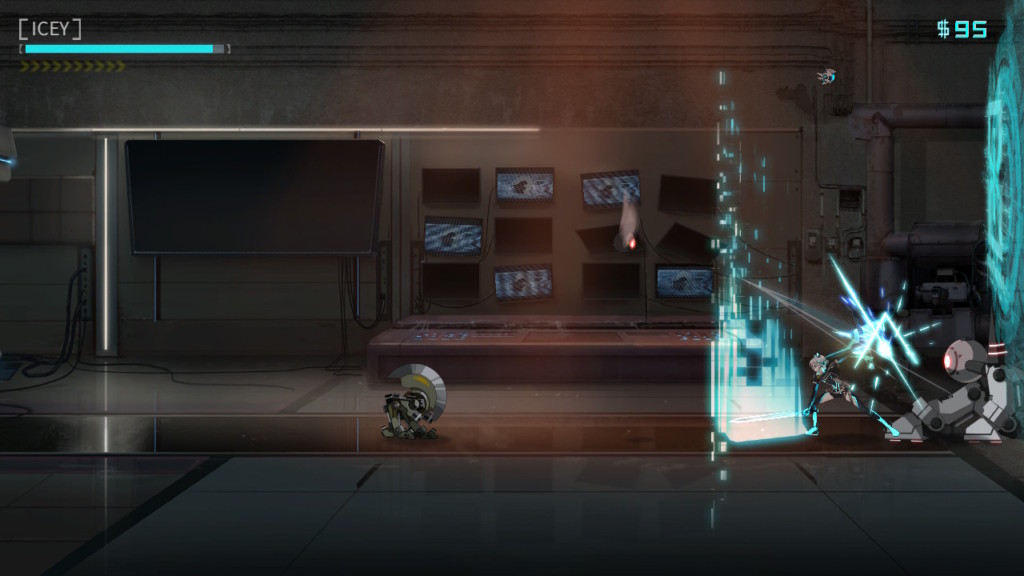
Playability
ICEY has no touch or motion controls, so you can play it docked or undocked as you please. I thought the sprites and backgrounds looked much better on a TV, personally, but at the beginning of the game it recommends that you use headphones for the best experience. The voiceover sounds just as bad on headphones, so I can’t really recommend that myself, but hey, it’s what the developers intended so give it a try, man.
TL;DR: Pretty, polished, and ambitious story, but terrible voice acting.






